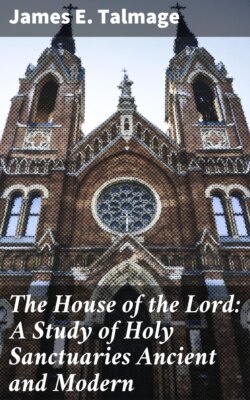Читать книгу The House of the Lord: A Study of Holy Sanctuaries Ancient and Modern - James E. Talmage - Страница 7
На сайте Литреса книга снята с продажи.
THE "TESTIMONY"
ОглавлениеTable of Contents
Prior to the construction of the Tabernacle in the wilderness, and indeed during the early stages of the memorable journey from Egypt, the people of Israel had a certain depository for sacred things, known as the Testimony. This is definitely mentioned in connection with the following incident. Under Divine direction a vessel of manna was to be preserved, lest the people forget the power and goodness of God, by which they had been fed:
"And Moses said. This is the thing which the Lord commandeth, Fill an omer of it to be kept for your generations; that they may see the bread wherewith I have fed you in the wilderness, when I brought you forth from the land of Egypt.
"And Moses said unto Aaron, Take a pot, and put an omer full of manna therein, and lay it up before the Lord, to be kept for your generations.
"As the Lord commanded Moses, so Aaron laid it up before the Testimony, to be kept."[2]
There appears little room for doubt that the Testimony here referred to was a material structure, and that its name is suggestive of Divine witness as to its sacred character. Inasmuch as the account of the exodus contains no mention of the making of such a structure, and moreover as its existence and use were definitely affirmed before the people had had time or opportunity to shape it in the wilderness, it would seem that they must have brought the sacred Testimony with them from Egypt. This incident is of interest and importance as indicating the existence of a holy sanctuary during the formative stages of Israel's growth as a nation, and while the people were in subjection to idolatrous rulers. This application of the term Testimony must not be confused with later usage by which the tables of stone bearing the divinely inscribed Decalogue are so designated.[3] It is to be noted further that the Tabernacle, wherein was housed the Ark of the Covenant containing the sacred tables of stone, is distinctively called the Tabernacle of Testimony. These several uses of the term lead to no ambiguity if the context be duly considered in each case.
